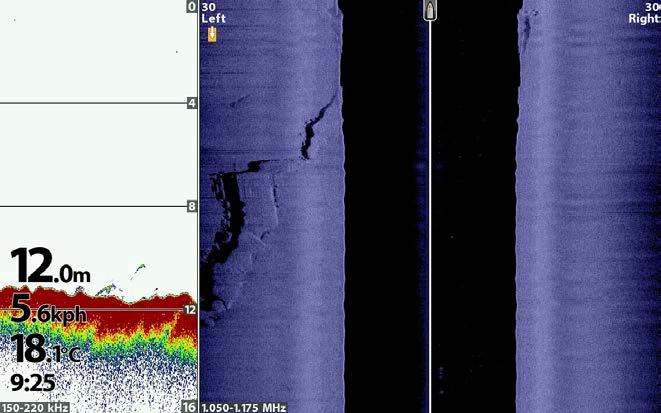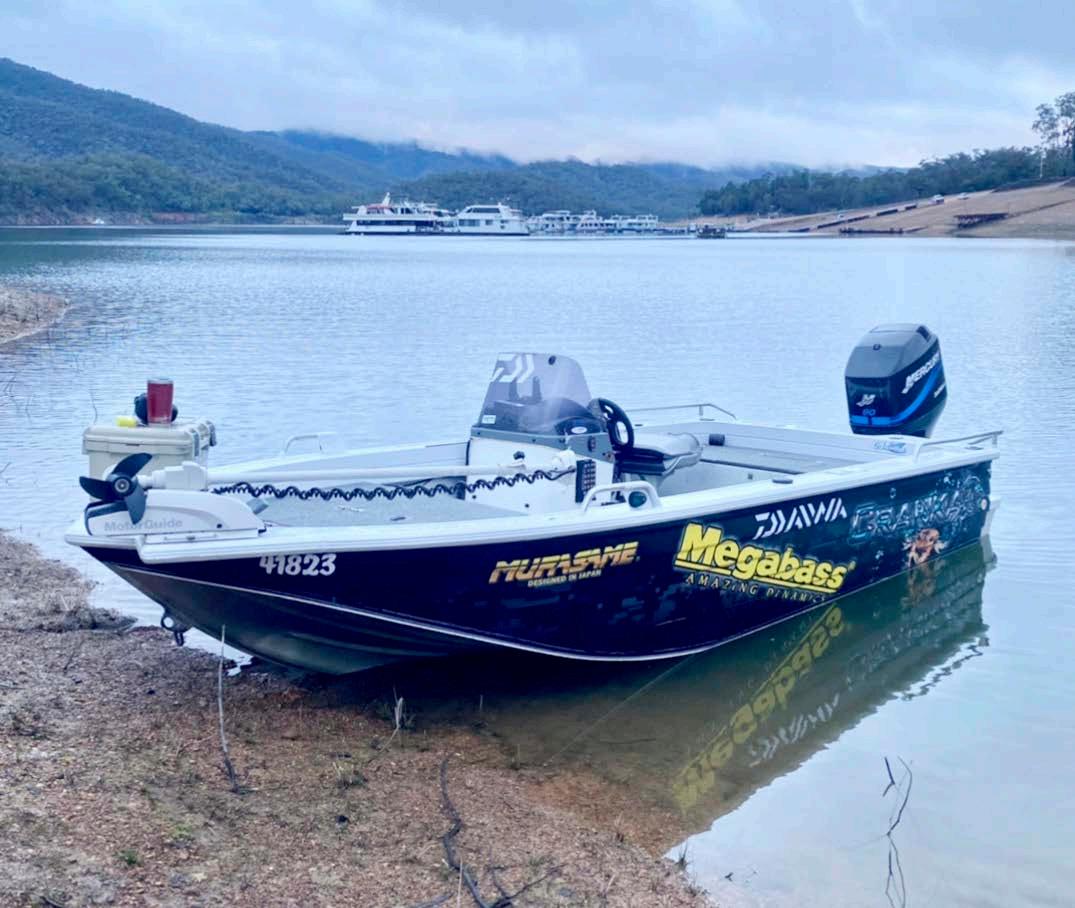
6 minute read
Inshoreestuary boat setup?
Setting up a boat to suit my fishing
Jack Gillespie
It is the age-old question that has spread from bars to campsites all over the country. What is the perfect boat setup? How should you set your boat up?
I am sure we have all come to the realisation that these are questions with no right answer. In the following article, I will do my best to share with you my personal views on what is right for me when fishing inshore waters and estuary systems in the hopes that it may help you in some way to get the most out of your boat and ultimately improving your fishing experience. In my personal opinion, the perfect boat isn’t full of complicated gadgets or cluttered with fancy rod holders or bolt-on sensations. Whilst these may meet the requirements of some, I tend to opt for a clean and practical boat. The following are some of the items that I find to be essential to my fishing platform.
Sounders
In recent times the technology being implemented into sounders has progressed in leaps and bounds. Gone are the days of a black and white screen with a picture of a fish floating by every so often leaving users wondering if it is a fish, or if the sounder just telling tales. We now have the benefit of much more accurate sonar technology essentially giving us a bird’s eye view of the bottom of the waterway. Add to that the introduction of side scan and live view technology that most manufacturers have brought to the market and we are spoiled for choice. With the market being one of a very competitive nature between manufacturers the buyers have truly become the winners here. A basic unit can be picked up for little more than $200 with features that certainly aid a day on the water. Moving up in price range to sidescan units, which can be purchased for less than $1000, really are a game-changer in my opinion. I rely heavily on side-scan when fishing inshore and estuaries, especially in areas that I have not fished before. Being able to see beyond the surface of the water to what is happening both beneath and around the boat can be key in tracking down your target species. Side-scan can help you to hone in on fishing areas that you may not have known were even there! With all of the features that a lot of the sounders on the market are now packing they can be a daunting tool to learn for the new user but fortunately, tools like the internet and YouTube really can help even the novice fisherman master their sounder.
Bow Mounted Trolling Motors
If I was told that I could only fit one accessory to my boat, it would be an electric trolling motor. Whilst I do not actually use my bow mount electric for trolling as the name would suggest, I can hands down say it is the one accessory that has been fitted to my boat that I use the most when fishing. Bow mounts really open up a world of opportunities when lure fishing inland lakes and coastal estuary systems. Many of the fish I target are often found lurking along shorelines and hidden in snags- my bow mount electric motor allows me to be able to control the boat and access these areas with ease, without having to rely on my main outboard engine. This allows me to quietly approach an area without spooking fish and also enables me to control the boat during the fight- using both the rod and the boat to move the fish away from any snags.
As with sounders, bow mount trolling motor technology is continuing to improve and push what we really thought possible. For the price-conscious, a trolling motor can be picked up with the basic forward, reverse, left and right features that will make life on the water easier. For those looking to get even more from a trolling motor many brands now manufacture GPS units that can lock the boat on the spot, map and replay tracks, hold your boats travel speed with cruise control and even link up to your sounders for a great integrated system. The spot lock feature can be quite handy when you want to hold your boat in a particular position to really fish the area and I also commonly use this feature when launching and retrieving my boat when fishing solo. With manufacturers competing to have the latest and greatest products on the market we are again the winners when it comes to choice!

Storage
Generally speaking, many inshore/estuary boats are limited in size. Commonly most boats in this category will range in size from 4-5 metres with some, of course, being both smaller and larger. This is where setting up your storage can make or break your fishing experience. Making the most out of your boats unused space is one of the most important things you can do from my experience. Whilst having a thousand and one places to put gear is always an incredibly handy feature to have, it always pays to be mindful of the layout and weight distribution. Having all of your gear in the right location will greatly improve the ride and handling of your boat. When deciding what to take on an outing will always depend on what species you will be targeting. After all, a day of bream or trout fishing will mean that taking the tuna rod and gaff is nothing more than a waste of time and space!
Limiting the amount of gear that you take to the essentials will also mean less clutter and stress when the fish are on and you won’t be throwing gear all around the boat searching for a knife or pliers in a hurry. Some boats can be very basic off the showroom floor and offer very little in the way of storage. Fortunately, many boating and tackle shops have a large range of items available to help maximise the potential of storage in your boat. With the internet at our fingertips and all of the options available to us, we are only really limited by our imaginations on what can be done when it comes to fitting a boat out with storage areas.
Add-ons
Let’s face it. There are hundreds if not thousands of “add-ons” you can fit to any boat. With this in mind, I certainly believe it is possible to get carried away with bolting accessories onto a boat. Keeping your setup as simple and as clean as possible is, in my personal opinion, the best way to go about it. When considering what accessories to add to your boat, be sure to take into consideration what kind of fishing you plan on doing and whether or not certain accessories are actually going to be beneficial to you.
Some of the other accessories I have added to my boat, in addition to the above mentioned, are:
A bilge pump on the off chance I take a bit of a wave over the side of the boat or forget to put the bungs in at the ramp.
Deck wash systems so I can keep the boat clean of fish slime when on the water. This has proven to be a handy investment enabling me to clean as I go and ultimately saving me a lot of time and energy scrubbing the boat when I get home.
A rod locker to ensure that the rods are kept safe and secure during transit both to and from the ramp as well as when on the water. The rod locker allows me to keep my rods safe and out of the way until I am ready to use them, minimising clutter and tangles on the deck. This is also incredibly useful when camping as I can lock the rods up at night.
Deck lights. These don’t actually get used for fishing but more so in the late evening/early mornings when getting ready to hit the water or packing gear away. I tend to have a few last-minute jobs to do the night before an outing and the addition of deck lighting means I do not have to pull out the torch once the sun disappears behind the horizon.
The best piece of advice I can offer would probably be this - make sure the boat is always ready!
Some of my most memorable trips have been planned on very short notice. Keeping your boat and gear ready to go at the drop of a hat will always produce some very enjoyable and memorable fishing adventures. This includes ensuring that you always have all of your safety gear on board, in date and regularly inspected. Making sure that your boat is checked annually by your local marine service specialist will ensure that you make it back to the ramp at the end of the day.
The use of modern technology will greatly increase your catch rate.





Sometimes the last thing we want to do after a big day on the water is to reorganise our gear ready for the next trip but it really can be the difference between getting to your destination and one the water as quickly as possible without burning time that could be betterspent fishing!
Jack Gillespie










